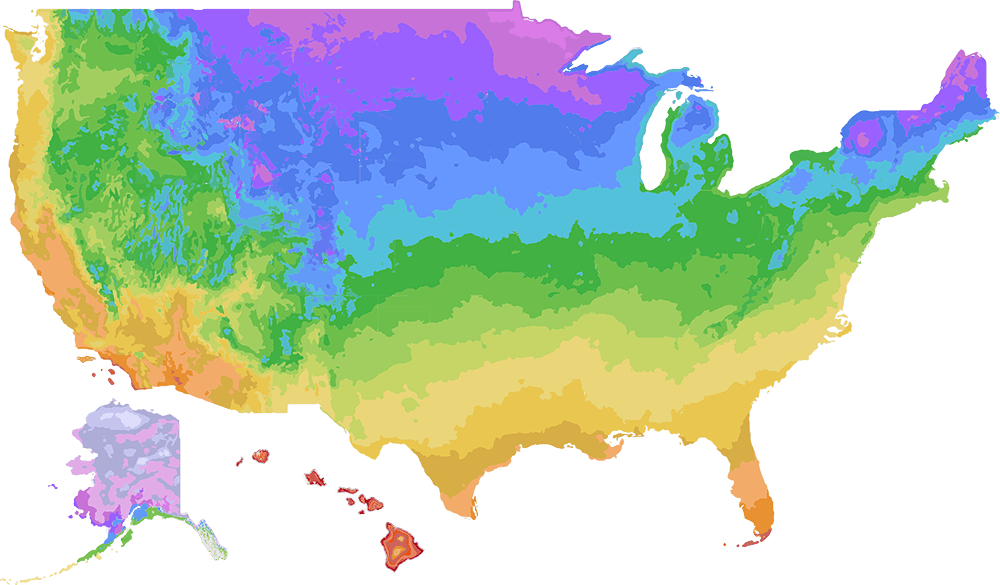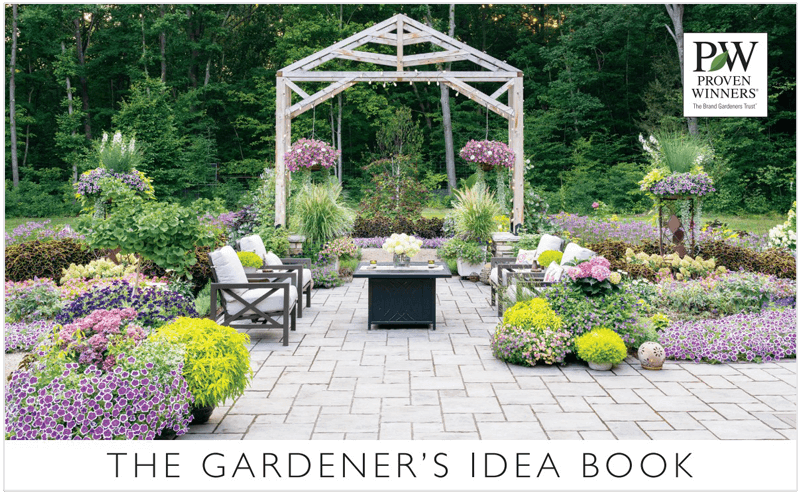Your Guide to Feeding Annuals
To get the most out of your plants, especially container plants, fertilizing is essential. This article will go over the basic types of fertilizers used on annual plants and give recommendations on when and how to apply those fertilizers for better plant care.


Have you ever wondered why some people seem to be able to grow larger, fuller plants? The likely answer is that they are feeding and watering them consistently. While some plants will do OK with little or no plant food, annual plants need to be fed to reach their full potential. However, it's important not to overdo it. Plant food is one of those things where more isn’t necessarily better. It is possible to harm your plants by feeding them too heavily. Our Proven Winners fertilizers are designed to be great all-purpose plant foods that support effective fertilizer tips and growth.
Making the Choice
You can get really technical and bogged down in the little things when it comes to fertilizer. However, what most gardeners really want to know is, what kind should I use and how often should I use it. Good fertilizer tips include understanding the N, P and K formula for successful annual plant feeding.
Fertilizers are based on what's known as the N, P and K formula. The letters stand for Nitrogen (N), Phosphorous (P) and Potassium (K). Our article, ABC’s of Fertilizer, gives a more in depth description these elements and how they affect long-term plant care.
There are three main types of fertilizer: water soluble, slow release and continuous release.
Water Soluble Plant Food
Water soluble fertilizer is the oldest and least expensive form of fertilizer. The package you buy will be filled with either a crystalline or liquid fertilizer. This substance is designed to be mixed with water, according to the directions on the package. Never sprinkle it on top of the soil and then water as this can easily burn your plants. Following these fertilizer tips, look for a formulation that has a fairly large N number (20 to 24 is good), a smaller P number - about half of N (10 to 12 would be good), and a K number that is equal to or slightly less than N (15 to 20 is fine). So, formulas that include an NPK ratio of 20:10:20, 24:12:17 or 20:10:15 would all work for water soluble fertiizer. Always follow the directions on the package for correct usage of your specific fertilizer since it varies from one product to the next. We recommend feeding your annuals every third time you water or once per week with water soluble fertilizer during the growing season.



Slow Release Plant Food
 Slow release fertilizer looks like pellets which are about one-third the size of a pea. You mix it into your soil at the time of planting or scatter it on top of the soil around your plant's roots. Slow release fertilizers do as their name says - they slowly release a small amount of nutrients to your plants over a period of several months. Exactly how much is released at once is largely dependent on the soil temperature. The microbes which help the product break to down to release nutrients are more active in warm soil. It is difficult to predict how long this type of fertilizer will remain in the ground because of these factors. Slow release fertilizer is more expensive than water soluble, but it doesn't need to be applied as often so you'll need less of it. For easy plant care, Proven Winners does not offer slow release plant food; we opt for Premium Continuous Release Plant Food instead.
Slow release fertilizer looks like pellets which are about one-third the size of a pea. You mix it into your soil at the time of planting or scatter it on top of the soil around your plant's roots. Slow release fertilizers do as their name says - they slowly release a small amount of nutrients to your plants over a period of several months. Exactly how much is released at once is largely dependent on the soil temperature. The microbes which help the product break to down to release nutrients are more active in warm soil. It is difficult to predict how long this type of fertilizer will remain in the ground because of these factors. Slow release fertilizer is more expensive than water soluble, but it doesn't need to be applied as often so you'll need less of it. For easy plant care, Proven Winners does not offer slow release plant food; we opt for Premium Continuous Release Plant Food instead.
Continuous Release Plant Food
Similar in appearance to slow release fertilizer, continuous release plant food is also dependent on soil temperature but is NOT dependent on microbes in the soil to make it work. Instead, the coating on continuous release plant food does not break down if the soil temperature is too cool. Since plant roots don't generally grow when the soil is cold, the plants don't need to be fed at that time. However, when the soil warms up and the roots start growing again, continuous release plant food is released to the plants. Most of these types of annual plant feeding fertilizers will last between 2 to 12 months depending on the formulation you choose. Proven Winners brand of Continuous Release Plant Food is designed to feed your plants for up to six months.

How to Use Plant Food
 Water soluble fertilizer is designed to be mixed with water, according to the directions on the package. Never sprinkle it on top of the soil and then water as this can easily burn your plants. When you water, direct the fertilizer-infused water towards the roots of the plant. There is no need to get the foliage wet since the nutrients will be absorbed by the roots, not the leaves.
Water soluble fertilizer is designed to be mixed with water, according to the directions on the package. Never sprinkle it on top of the soil and then water as this can easily burn your plants. When you water, direct the fertilizer-infused water towards the roots of the plant. There is no need to get the foliage wet since the nutrients will be absorbed by the roots, not the leaves.
Slow and continous release fertilizers are both applied without adding water. If you are planting in pots, you can either mix it into the potting soil (preferred) or you can top-dress the pot with it. Follow the directions on the package to determine how much to add to each pot. Top-dressing (photo, left) means adding the desired amount of fertilizer to the top of a potted plant for optimal plant care.
If you are planting into the landscape, add the appropriate amount of fertilizer into the hole before placing the plant in it. Be sure to mix the fertilizer into the soil at the bottom of the hole so it won't burn the plant's roots. If you are applying slow or continuous release plant food to an already established planting, top-dress according to the directions on the package.
Our Recommendation
Should you use a water soluble, slow release or continuous release fertilizer? The answer depends on what you are growing.
Annuals - Add continuous release plant food at the time of planting, and then feed every third time you water or once per week with water soluble fertilizer during the growing season. If your growing season is long, top-dress your plants when feeding annuals with continuous release fertilizer again in midsummer.
Perennials - Add continuous release plant food at the time of planting, then again each spring.
Shrubs - Use a slow release fertilizer formulated for trees and shrubs once in spring.
As with everything, there are a few more details to consider. There are times when it makes sense to feed your plants more often with water soluble fertilizer including:
- If you have plants in pots that are “heavy feeders", meaning those that thrive on a lot of nutrients, such as Supertunia petunias and Superbells calibrachoa. When growing heavy feeders in containers, it's important to keep up on fertilizing to help sustain their robust growth. When plants that are heavy feeders are planted in the ground, they can take advantage of the native fertility of your soil and shouldn’t need as much extra fertilizer.
- If there has been a long, rainy period or you've had a very heavy rainfall, some of the fertilizer has likely washed away in the rain. Feed your plants with water soluble fertilizer to return some nutrition to your potting mix and help your plants rebound.
- If your plants have grown very large, supplemental water soluble fertilizer may help them maintain lush growth and annual plant feeding consistency.
Plants only need fertilizer when they are actively growing, so don't waste it by feeding dormant plants. Be careful not to overfertilize annuals with water soluble fertilizer in early spring when they aren’t growing as much and can't use all the extra nutrients.








